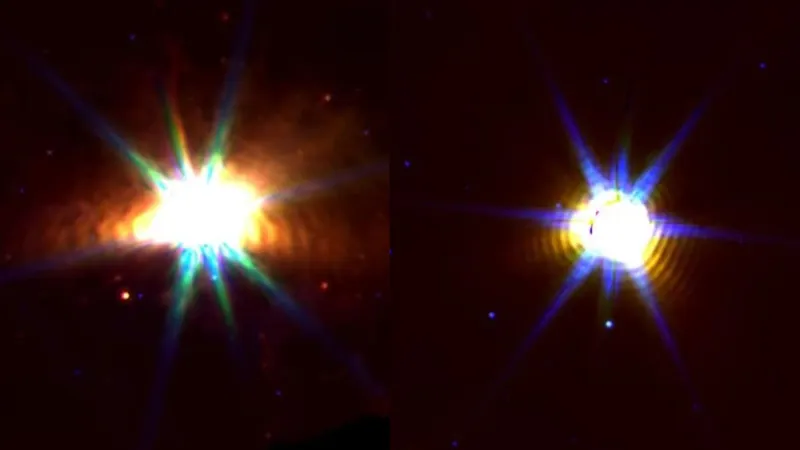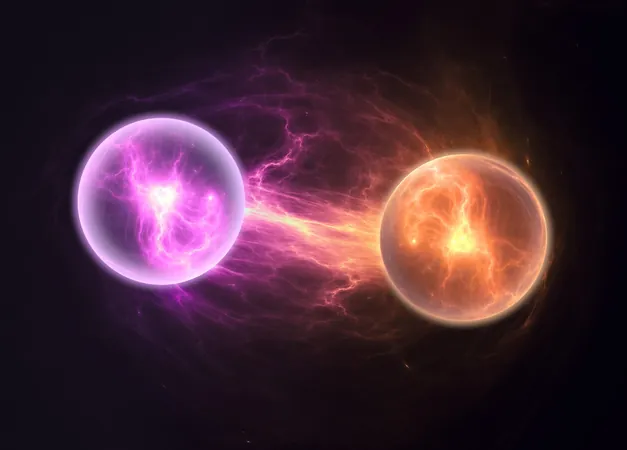
Unveiling Cosmic Dust: James Webb Space Telescope Sheds Light on Dying Stars
2025-07-10
Author: Li
A Stellar Breakthrough with the James Webb Space Telescope
Astronomers harness the power of the James Webb Space Telescope (JWST) to peel back the layers of mystery surrounding the dusty cloaks of dying stars. This groundbreaking research could unravel the origin of cosmic dust that plays a vital role in the formation of new stars.
The Star of the Show: Wolf-Rayet Stars
Focusing on aging giants known as Wolf-Rayet stars, these massive celestial bodies are nearing their explosive demise. Having consumed their hydrogen fuel, they are on the brink of supernova eruptions that will scatter the elements forged within them across the universe. As they transition into the next phase of stellar evolution, Wolf-Rayet stars are key players in the cosmic recycling process.
"Wolf-Rayet stars represent the final act of massive stars, shedding their hydrogen and fusing helium in their cores," explained team leader, Professor Noel Richardson from Embry-Riddle Aeronautical University. "This signals their imminent death and cosmic rebirth process.”
Uncovering Dusty Secrets
As these stars reach the end of their life cycles, they unleash powerful stellar winds that, when paired with other massive stars, coalesce into clouds of carbon dust. Previously, astronomers had only observed these dust shells around the Wolf-Rayet star WR-140, but now a team of researchers has expanded their view.
Richardson's team studied four additional Wolf-Rayet star systems and discovered that each harbored multiple dusty shells akin to those found surrounding WR-140.
A Broader Vision
"Our findings reveal that these dust shells are not just a peculiar occurrence but a common feature among these star systems," Richardson noted. Team member Ryan Lau from NOIRLab emphasized the significance of this research: "We confirmed that the surviving dust shells are a trend, suggesting that the dust from Wolf-Rayet stars has a remarkable ability to endure the harsh conditions of space."
A Paradigm Shift in Cosmic Chemistry?
The potential longevity of this carbon dust could transform our understanding of star formation. Lau raised intriguing questions about this enigmatic material, asking, "Where does this dust go? We aim to investigate the chemical makeup of this dust by analyzing its spectra, providing clues about its physical properties and contributions to the interstellar medium.”
As the JWST continues to unlock the secrets of our universe, this study marks a pivotal moment in the quest to understand the life cycles of stars and the intricate web of cosmic evolution.




 Brasil (PT)
Brasil (PT)
 Canada (EN)
Canada (EN)
 Chile (ES)
Chile (ES)
 Česko (CS)
Česko (CS)
 대한민국 (KO)
대한민국 (KO)
 España (ES)
España (ES)
 France (FR)
France (FR)
 Hong Kong (EN)
Hong Kong (EN)
 Italia (IT)
Italia (IT)
 日本 (JA)
日本 (JA)
 Magyarország (HU)
Magyarország (HU)
 Norge (NO)
Norge (NO)
 Polska (PL)
Polska (PL)
 Schweiz (DE)
Schweiz (DE)
 Singapore (EN)
Singapore (EN)
 Sverige (SV)
Sverige (SV)
 Suomi (FI)
Suomi (FI)
 Türkiye (TR)
Türkiye (TR)
 الإمارات العربية المتحدة (AR)
الإمارات العربية المتحدة (AR)